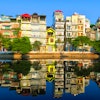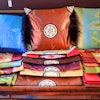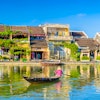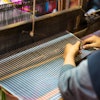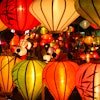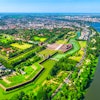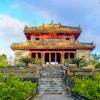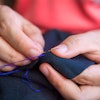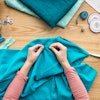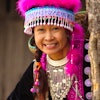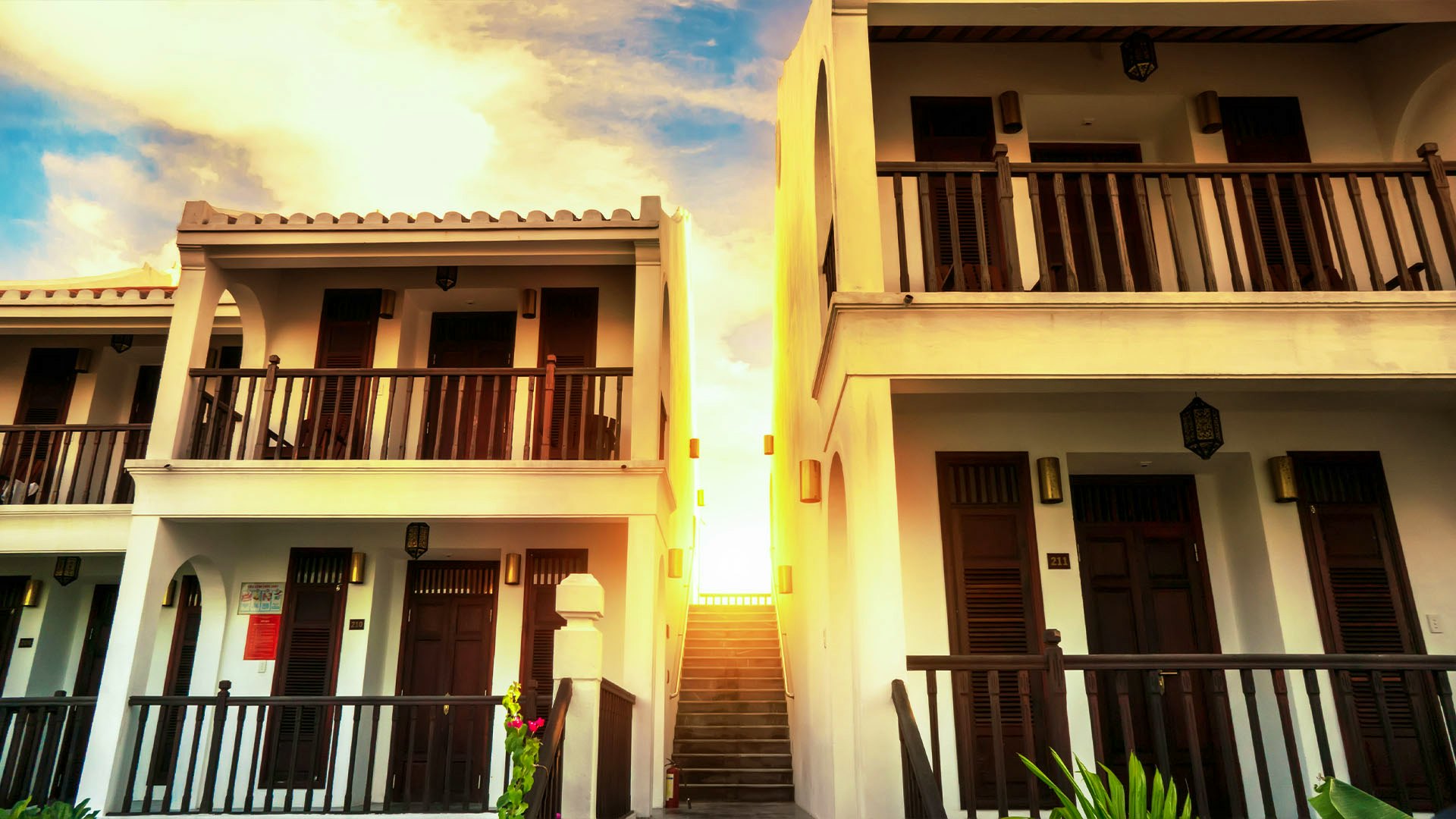Filter Holidays
Find your
next holiday
Filter
Holidays
Sign Up to Emails
Subscribe to our email newsletter and find out the latest news, updates and offers first!
Textile Treasures of Vietnam
16 days from £4,695pp
Holiday Overview
Join our expert on this superb textile holiday to Vietnam! This hugely popular tour showcases the rich colours and cultural highlights of a truly fascinating country. Explore historic cities, walk through tranquil rural landscapes and shop in local ethnic markets where traditional dress is still very much part of everyday life. Vietnam’s textile traditions are very much alive. We'll be welcomed into the homes of local artisans as we visit silk villages, take part in indigo dyeing, and learn about the ethnic minorities' different weaving techniques.
Itinerary
Please choose your preferred 16 day itinerary
Please Note: Flight-inclusive packages are available at an extra cost, with flights from London to Hanoi and Danang to London with 1 piece of checked-in luggage included.
Workshop Information: Taking inspiration from our surroundings, the project will provide a lasting memory of our travels! The kit will contain everything you need and will be suitable for all abilities, but textile treasures and embellishments that we find during our journey can be bought and added to the project to create a truly unique piece. As always on my Stitchtopia travels there will be other smaller projects to delight and entertain!
With our flight-inclusive package, today you will meet your expert and Tour Manager at London airport for your overnight flight to Hanoi, Vietnam’s capital.
If you have booked our flight-inclusive package, on arrival at the airport, we’ll meet our guide and transfer to the hotel for immediate check in.
If you have booked our join direct package, meet us at the hotel today.
After some time to unpack and freshen up, we’ll experience the life of an Hanoian in the 1950s as we travel through the Old Quarter by cycle rickshaw. During the tour, we’ll visit the bustling streets of the ‘District of the 36 Guilds’ where we’ll see artisans such as tinsmiths, jewellers, calligraphers, and carpenters selling their wares.
Our tour ends with an incense burning ceremony. Vietnamese people believe that when incense is burnt, the smoke from it will create a bridge to connect them to family members who have passed away into the spirit world. This experience will help us understand the importance of incense as we visit temples and pagodas during our time here.
After dinner at a local restaurant, we transfer back to our hotel.
Included Meals
- Dinner
Highlights
- Hanoi Tour
Our day begins with a visit to CraftLink, a non-profit organisation working with ethnic minority craftspeople in Vietnam. Popular items stocked here are pottery, embroidered cloth and colourful shopping bags.
Established in 2000, the Indigo Store applies original indigo designs to natural materials such as organic cotton and hemp which are made by ethnic minorities in the mountainous regions of Northern Vietnam. Here we’ll enjoy an indigo dyeing class, before transferring to a local restaurant for lunch.
This afternoon, we’ll get an interesting introduction to Vietnamese culture as we visit the Ethnology Museum and learn about the 54 ethnic groups that can be found across Vietnam. We’ll see an impressive collection of traditional costumes, musical instruments, and jewellery and illustrations of various customs.
Included Meals
- Breakfast
- Lunch
Highlights
- CraftLink
- Indigo Dyeing Class
- The Ethnology Museum
Van Phuc Silk Village, the ‘cradle of Vietnamese silk’ is located on the Nhue Thi River, about 8km southwest of Hanoi. The village is well known for its traditional sericulture, weaving and silk products. The silk is made on very simple looms; the traditional Vietnamese way of making silk. As we walk through the village, you’ll notice that most of the houses have been turned into shops selling silk products; of the 1,280 households in the village, 90% are involved in silk production. The village makes more than 2 million meters of silk per year.
Founded in 2017, Vun Art is a social enterprise that trains people with disabilities to make handicrafts and apparel using discarded fragments of Van Phuc silk. It’s estimated that the village discards around 10,000 kilos of silk scraps each month. The signature Vun Art style sees Vietnamese folk-painting designs reimagined and repurposed with silk fragments using collage techniques. The artists make handicrafts, postcards, paintings, t-shirts, wallets, purses and more. The staff here will tell us the story of this traditional handicraft community, their mission and the products they make. We’ll then try our hand at some fabric painting with the help of a local artisan.
Return to Hanoi to visit the Woman’s Museum. Established in 1995, this remarkable museum contains about 28,000 objects, photos, costumes, books and letters highlighting the history of women in Vietnam. It not only exhibits the costumes and traditions of various ethnic groups, but also pays tribute to the courage and great sacrifice of women during the wars.
This afternoon we return to our hotel for our first workshop. Tea/coffee will be served part way through. Lunch is included today.
Included Meals
- Lunch
Highlights
- The Woman’s Museum
- Van Phuc Silk Village
- Workshop
This morning, we leave Hanoi and travel by road to Mai Chau. This rural district is home to the Ban Lac people, descended from two Thai tribes that settled here. Our route ascends through the mountains, passing charming villages. We’ll have lunch in Lac village before taking a walk around the village, taking in the rural scenery of mountains, streams and paddy fields and shopping for handmade products from the residents. Each family in Mai Chau has a loom where the women work, producing brocade fabrics known for their rich colours and raised patterns.
Transfer to our hotel. Dinner is included this evening.
Included Meals
- Breakfast
- Lunch
- Dinner
Highlights
- Lac
- Mai Chau
Our excursion today takes us to the small village of Pa Co. The village is home to the ethnic Hmong people, known for their distinctive culture and handicrafts. Today is market day and will be packed with Thai and Hmong minorities wearing their beautiful costumes. Vegetables, fruits and meat will be on sale, but also Hmong fabrics. We’ll also discover an ancient method of making the iconic Hmong indigo fabric with a villager.
Return to our hotel in Mai Chau. Lunch and dinner are included today.
Included Meals
- Breakfast
- Lunch
- Dinner
Highlights
- Pa Co Village
This morning is at leisure. Transfer to Mai Hich for lunch with a local ethnic Thai family. Continue to Buoc village, where we’ll be warmly welcomed into a stilt house for a Thai weaving workshop.
Return to our hotel in Mai Chau. Dinner is included this evening.
Included Meals
- Breakfast
- Lunch
- Dinner
Highlights
- Buoc
- Mai Hich
- Thai Weaving Workshop
Transfer to Hanoi airport for our fight to Hue. Hue was the capital of Vietnam during the Nguyen dynasty from 1802 to 1945. Its leafy streets are lined with pagodas, art déco mansions, and markets. Through the whole scene flows the Perfume River, setting a languid pace the rest of the city is happy to follow. On arrival we will be met by our local guide and driver and transfer to our hotel.
Included Meals
- Breakfast
Highlights
- Hue
The Imperial City of Hue is a walled enclosure within the citadel. It contains the palaces that housed the imperial family, as well as shrines, gardens, and villas. Constructed in 1803 under Emperor Gia Long as a new capital, it mostly served a ceremonial function during the French colonial period. After the end of the monarchy in 1945, it suffered heavy damage and was neglected during the Indochina Wars through the 1980s.
The city was designated as a UNESCO World Heritage Site in 1993 and is undergoing restoration. We’ll visit the citadel before continuing to the tomb of emperor Minh Mang, who ruled between 1820 and 1840. It is perhaps the finest of all imperial tombs in Hue. Built between 1841-43 it is surrounded by peaceful ponds, gardens, pavilions and temples.
After lunch at a local restaurant, we continue to the house of Ton Nu Tri Hue, the only family in Hue who has inherited the technique for making handmade royal pillows. Her mother was born into a family of royal origin and at the age of 17 learned sewing and embroidery at the royal palace. She also learned about the royal multiple-fold pillow, which supports the head, back, and arms while reading, reciting poetry, or drinking. With the last king of Vietnam ruling until 1945, the family now replace pillows found at historical sites as well as making pillows for longevity ceremonies, for decoration and for film sets.
During the visit, we'll have the opportunity to learn and practice the techniques that make these pillows a symbol of Vietnam's cultural heritage and bring home a pillowcase as a souvenir
Included Meals
- Breakfast
- Lunch
Highlights
- Hue
During the Nguyen Dynasty, skilled artisans travelled to Hue to serve the royal family’s demands. These artisans founded various handicraft villages and we will visit some of these today. Thanh Tien village is famous for its 400-year-old paper-making craft. Mr Huy will welcome us into his home to share his knowledge and skill on paper flowers, often used as decoration and for ceremonies. We’ll try our hand at making a lotus flower, the symbol of Vietnam, a perfect memento of our visit here.
Return to our hotel for our second workshop. Tea/coffee will be served part way through.
Later this afternoon, a private wooden boat will take us on a journey down the Perfume River as the sun slowly sets. A refreshing cocktail and snacks will be served as we take in the scenery and enjoy an Ao Dai show on the boat, a traditional Vietnamese cultural show.
Lunch is included today.
Included Meals
- Breakfast
- Lunch
Highlights
- Perfume River Boat Trip
- Than Tien
- Workshop
We depart Hue this morning to travel to Danang by road along the spectacular Hai Van Pass. The beauty of the landscape on show as we drive over the pass cannot be understated. The road snakes its way up through steep hills, surrounded by lush tropical jungle and offers views out over the ocean and white sand beaches. We’ll make several stops along the way, including one at the Paradise beach of Lang Co. Continue to Hoi An. Hoi An was named a UNESCO World Heritage Site in 1999. Old Town Hoi An, the city's historic district, is recognized as an exceptionally well-preserved example of a Southeast Asian trading port dating from the 15th to the 19th century.
Included Meals
- Breakfast
Highlights
- Hoi An
Today we’ll explore the history of sericulture and silk weaving, as well as the history of the Cham people, a Muslim community in Vietnam. At a traditional Vietnamese mulberry garden, we’ll learn how to get the best mulberry leaves, visit the silkworm breeding house and learn about the life cycle of a silkworm.
Our visit will continue to the Unravelling House, where we’ll understand how to get silk thread from the cocoon, Cuu Dien House, where we’ll discover what happens to the silk thread once it is extracted from the cocoon. At the Cham Textile House, we’ll learn about the weaving process of the Cham people on short and long looms. The local artisans will teach us how to weave the brocade and move the silk thread to create different patterns. At the Hoi An Silk Village exhibition we’ll learn to tell the difference between pure and non-pure silks and have some time for shopping.
Lunch at the Silk Village Restaurant is included today.
Included Meals
- Breakfast
- Lunch
Highlights
- Hoi An
This morning we’ll enjoy a walking tour of Hoi An ancient town. Cars and motorbikes are forbidden here, so we will be able to enjoy the small streets on foot and take in the Chinese temples, traditional houses and the daily life of local people.
We will stop at Quan Thang ancient house, one of the most beautiful ancient houses in Hoi An town. At over 300 years old, it is home to three generations who continue the tradition of making White Roses (dumplings stuffed with shrimp or pork), a well-known speciality of Hoi An. We will be warmly welcomed by the family and learn about their ancestors, who were Chinese merchants, as well as the history and architecture of the house. Under the guidance of our host, we’ll try our hand at making our own White Roses. Lunch at a local restaurant is included.
This afternoon we’ll join a lantern workshop at Ha Linh Lantern Factory. Introduced to Vietnam hundreds of years ago by the Chinese, the crafting of silk lanterns has become a speciality in Hoi An. We will be guided by local craftsmen to make our own lantern, a perfect souvenir of our time here.
Included Meals
- Breakfast
- Lunch
Highlights
- Hoi An Walking Tour
- Lantern Workshop
The Precious Heritage Museum and Art Gallery is home to the permanent exhibition of Réhahn’s Precious Heritage Collection. The collection will transport us to the further reaches of Vietnam and unveil the rich tapestry of the country’s ethnic tribes. We’ll discover striking portraits, stories, and heirlooms that can’t be found anywhere else in the world. Five rooms in a 19th century French house present hundreds of portraits, over 60 costumes and tribal songs. As we visit each room, we’ll follow Réhahn on his nearly decade-long journey to document the 54 ethnic groups and subgroups left in the country.
Return to our hotel for our third workshop. Tea/coffee will be served part way through.
This evening we’ll head to Tra Que village for a countryside dinner. We’ll be welcomed by a member of the family before diving into a feast of the best local cuisine made from local ingredients picked just that afternoon from nearby farms.
Included Meals
- Breakfast
- Dinner
Highlights
- The Precious Heritage Museum and Art Gallery
- Tra Que
- Workshop
With our flight-inclusive package, we transfer to Danang airport for our overnight flight to London.
If you have booked our join direct package, your tour ends after breakfast.
Included Meals
- Breakfast
Early morning arrival at a London airport.
Tour Notes: You will need to have a good level of fitness to get the most out of this holiday. We therefore do not recommend this tour for anyone with mobility problems. The itinerary involves a significant amount of walking whilst sightseeing each day, sometimes in warm temperatures and often on rough ground and including steps. Whilst sightseeing is taken at a leisurely pace, for the enjoyment of everyone in the group you should be able to keep up with your fellow travellers.
Accommodation
You will stay for three nights at the 5-star Legend Hotel, Hanoi, for three nights at the 4-star Mountain View Resort, Mai Chau, for three nights at the 5-star Senna Hotel, Hue, and for four nights at the 4-star Legacy Resort, Hoi An.
Legacy Hoi An Resort
This 4-star resort offers a picturesque and tranquil setting for a peaceful and comfortable stay. The staff here pride themselves on their attention to detail, ensuring excellent service by a friendly, dedicated team.
Hotel Facilities
- Outdoor Swimming Pool
- Bar
- Restaurant
- Laundry Service
- Gym
Room Facilities
- TV
- Tea and Coffee Making Facilities
- Hairdryer
- Safe Box
- Air Conditioning
- Fridge
- Shower and Bath
- Telephone
- Free Wifi
Legend Hanoi Hotel
Elegant, soft and welcoming, this brand new 5* property is ideally located in Hanoi’s vibrant Hoan Kiem district. The hotel offers a peaceful, comforting, cosy haven with excellent, attentive service. The Indochine styled and homey guest rooms feature statement wallpaper, streamlined furniture, and thoughtful extras
Hotel Facilities
- Outdoor Swimming Pool
- 5 Star
- Guest Lounge
- Bar
- Restaurant
- Lift
- 24 Hour Front Desk
- Laundry Service
- Gym
Room Facilities
- TV
- Tea and Coffee Making Facilities
- Hairdryer
- Safe Box
- Air Conditioning
- Shower
- Telephone
- Free Wifi
Mai Chau Mountain View Resort
This 4-star hillside home filled with warmth and joy offers an exceptional retreat. The 22 bedrooms are large, comfortable and filled with natural light and elegantly designed in warm tones. In the restaurant, local chefs introduce the best of Mai Chau’s cuisine, along with traditional Vietnamese specialities.
Hotel Facilities
- 4 Star
- Bar
- Restaurant
- Outdoor Swimming Pool (Seasonal)
Room Facilities
- TV
- Hairdryer
- Safe Box
- Air Conditioning
- Fridge
- Free Wifi
Senna Hue Hotel
Located in the heart of Hue, this 5-star hotel offers a classic modern design and a variety of luxury services. The trapezoid-tile roof combined with the crimson frontage and the square-shaped building are hallmarks of historic French architecture. Featuring a Koi fishpond at the entrance to the tropical garden, the hotel provides a tranquil, relaxing retreat. All the 129 bedrooms boast the luxurious modernity of a spacious, airy boutique hotel, with an emphasis on design inspired by the atmosphere of a bygone era. The restaurant offers a superb culinary experience featuring traditional family–style Hue cuisine, with a contemporary twist.
Hotel Facilities
- Bar
- Restaurant
- Lift
- Room Service Available
- Laundry Service
Room Facilities
- TV
- Tea and Coffee Making Facilities
- Hairdryer
- Safe Box
- Air Conditioning
- Fridge
- Shower
- Telephone



